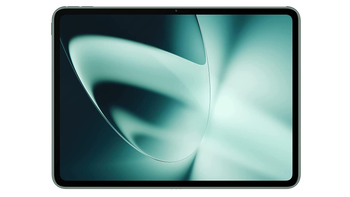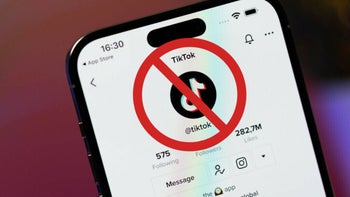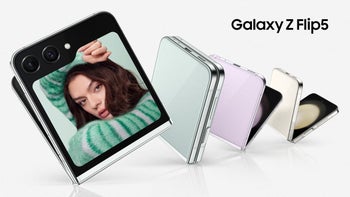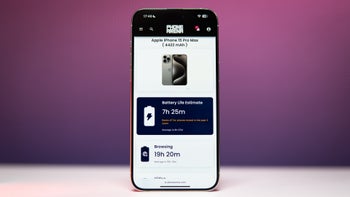Windows Phone 7 released to manufacturing with welcome last minute tweaks

Windows Phone 7 reached its golden build yesterday and the RTM (Release to Manufacturing) version is ready to be installed on devices from LG, HTC, Samsung, Asus and Dell. Since the Technical Preview a few weeks ago and nearly ten thousand devices running tests daily, as per Microsoft, there have been some notable changes, probably based on the feedback from reviewers.
The annoyingly long list of contacts when you synchronised with your Facebook friends, is gone. Instead, the OS tries to figure out if you have the person already in contacts, and filter only their info off of Facebook. In another Facebook related improvement, now you can directly "like", or do a wall post from the People Hub.
A person with insides on Microsoft's mobile strategy issued an interesting opinion the other day, justifying the fact that it charges manufacturers around $15 for the mobile OS, while Android is free. His point was that Android ends up costing maybe even more in the end, due to its ragtag hardware and updating policies.
On first count, his comments ring true to us. He says that manufacturers are rarely using the stock Android build. They usually develop their own versions of the UI, be it Sense, Timescape, or TouchWiz, to name the most popular. The polished user experience of the Metro interface, Zune, Xbox LIVE, Exchange, and Visual Studio for app development comes standard with WP7, and manufacturers don't need to spend additionally to come up with their own solutions. Editing Microsoft Office documents and licensed audio/video codecs also come with WP7, but royalties have to be paid to use them on an Android handset.
Then the Android hardware is all over the place - drivers have to be often rewritten each time for the screen, the connectivity chips, etc. The pre-approved hardware requirements approach to Windows Phone 7 means that most of the device drivers are already prepared by Microsoft, plus the QA testing is automated, so the OEMs can get a device out of the door faster and cheaper.
And, last but not least, he cites the painful update process, and the legal costs associated with using Android as a mobile OS. By paying the licensing fee for WP7, OEMs are basically exempt from intellectual property lawsuits regarding this or that feature, they will all be handled by Microsoft, unlike the case with Android, where many devices ship with Google services stripped due to legal and licensing issues. As far as the update process - according to the source, Microsoft has made it easy for OEMs to insert their own custom code in the subsequent WP7 updates, instead of having to spend on creating their own updates based on the stock build. That explains the numerous delays with the Froyo update, and the reluctance to bother with the less popular Android devices at all.
Microsoft might be sinking a lot of cash into Windows Phone 7 to catch up quick, but it has the advantage of coming late to the party, so it already knows what works and what doesn't in the mobile industry. It decided to keep up with the deadline, and leave features like copy and paste, and some multitasking abilities, for later updates. How's that going to pan out, remains to be seen. On all our napkin counts, Microsoft will have to license Windows Phone 7 to around 70 million devices at $15 a pop to recoup the initial development and marketing costs, if the $1 billion number that analysts came up with, is close to the truth.
For one thing, the OS starts quickly, below is a video of Windows Phone 7 boot up timing next to the competition.
source: BusinessInsider & Electronista
The annoyingly long list of contacts when you synchronised with your Facebook friends, is gone. Instead, the OS tries to figure out if you have the person already in contacts, and filter only their info off of Facebook. In another Facebook related improvement, now you can directly "like", or do a wall post from the People Hub.
A person with insides on Microsoft's mobile strategy issued an interesting opinion the other day, justifying the fact that it charges manufacturers around $15 for the mobile OS, while Android is free. His point was that Android ends up costing maybe even more in the end, due to its ragtag hardware and updating policies.
On first count, his comments ring true to us. He says that manufacturers are rarely using the stock Android build. They usually develop their own versions of the UI, be it Sense, Timescape, or TouchWiz, to name the most popular. The polished user experience of the Metro interface, Zune, Xbox LIVE, Exchange, and Visual Studio for app development comes standard with WP7, and manufacturers don't need to spend additionally to come up with their own solutions. Editing Microsoft Office documents and licensed audio/video codecs also come with WP7, but royalties have to be paid to use them on an Android handset.
Then the Android hardware is all over the place - drivers have to be often rewritten each time for the screen, the connectivity chips, etc. The pre-approved hardware requirements approach to Windows Phone 7 means that most of the device drivers are already prepared by Microsoft, plus the QA testing is automated, so the OEMs can get a device out of the door faster and cheaper.
And, last but not least, he cites the painful update process, and the legal costs associated with using Android as a mobile OS. By paying the licensing fee for WP7, OEMs are basically exempt from intellectual property lawsuits regarding this or that feature, they will all be handled by Microsoft, unlike the case with Android, where many devices ship with Google services stripped due to legal and licensing issues. As far as the update process - according to the source, Microsoft has made it easy for OEMs to insert their own custom code in the subsequent WP7 updates, instead of having to spend on creating their own updates based on the stock build. That explains the numerous delays with the Froyo update, and the reluctance to bother with the less popular Android devices at all.
Microsoft might be sinking a lot of cash into Windows Phone 7 to catch up quick, but it has the advantage of coming late to the party, so it already knows what works and what doesn't in the mobile industry. It decided to keep up with the deadline, and leave features like copy and paste, and some multitasking abilities, for later updates. How's that going to pan out, remains to be seen. On all our napkin counts, Microsoft will have to license Windows Phone 7 to around 70 million devices at $15 a pop to recoup the initial development and marketing costs, if the $1 billion number that analysts came up with, is close to the truth.
For one thing, the OS starts quickly, below is a video of Windows Phone 7 boot up timing next to the competition.
source: BusinessInsider & Electronista













Things that are NOT allowed: